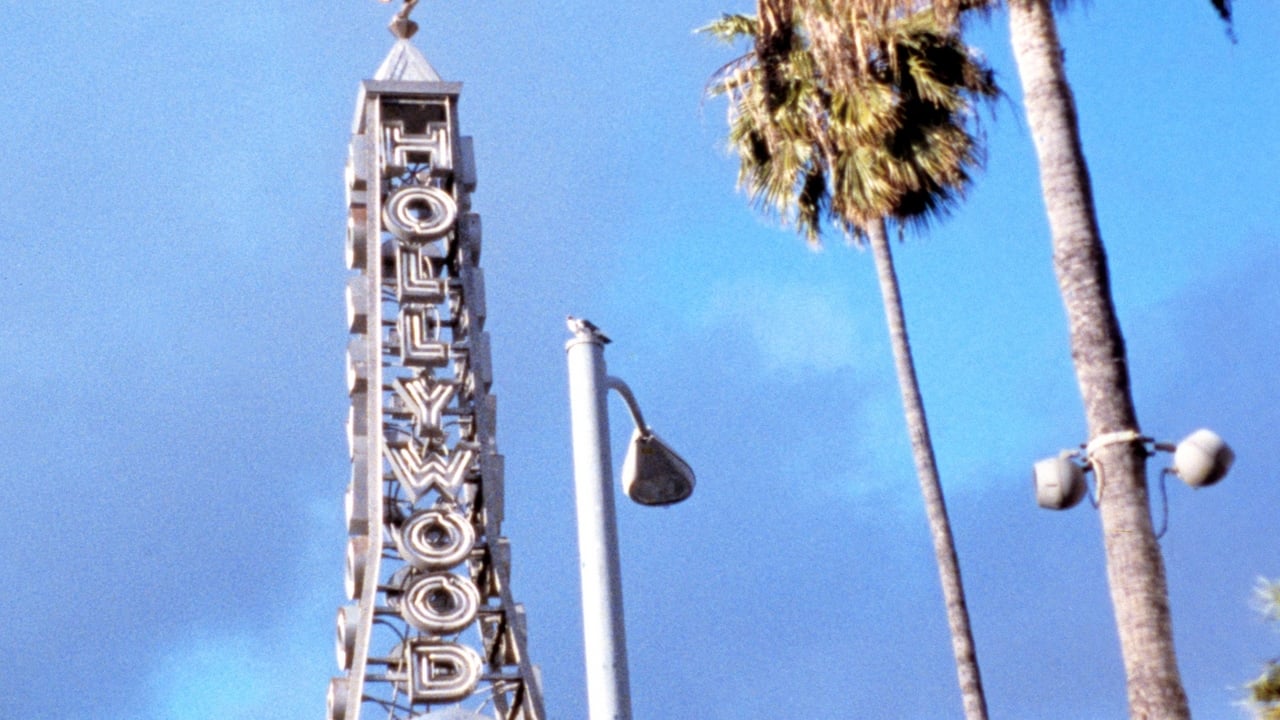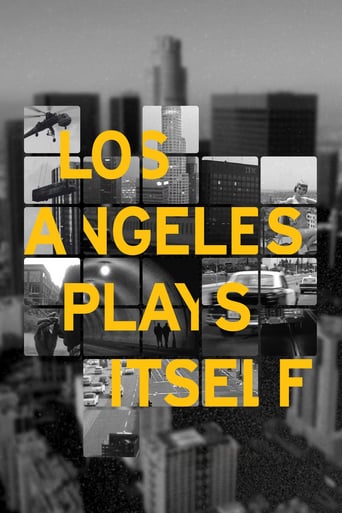



Lack of good storyline.
Tells a fascinating and unsettling true story, and does so well, without pretending to have all the answers.
View MoreThe movie turns out to be a little better than the average. Starting from a romantic formula often seen in the cinema, it ends in the most predictable (and somewhat bland) way.
View MoreThe movie's not perfect, but it sticks the landing of its message. It was engaging - thrilling at times - and I personally thought it was a great time.
View MoreThe filmmakers clearly went to a lot of trouble to assemble all these clips of Los Angeles past and present, but the peevish and pretentious narrator, droning nonstop in my ear, soon got in the way. Worse, the focus of his grumpy soliloquizing was often at odds with what was on the screen. For example, while we saw a wild (and obviously painstakingly worked-out) scene from a Buster Keaton comedy in which a cart releases a cascade of beer barrels onto a steeply sloping road, the narrator continued yammering on as if completely oblivious to what was taking place on screen. He was busy pontificating about how (if memory serves) some images can be characteristic of one particular urban locale while others are more generic. Duh. Watching the movie, or trying to, is like sitting in a theater with a depressed grad student seated behind you, muttering a sour, self-referential monologue to himself, without a pause, while you're attempting to concentrate on the film. After a while, you want to turn around and yell SHUT THE F#%& UP ALREADY!!
View MoreLengthy (2 hours and 50 minutes) though absorbing and intelligent documentary on Los Angeles and how the city has been reflected in the movies (its scandals, its crimes, its mob connections, its architecture, etc.). Written and directed by Thom Andersen, with dry, non-showy narration by Encke King, this was a massive undertaking, yet the film and TV clips selected are enjoyable, giving us a past and present view of the city's streets and skyline, the seedy decay and the glamor of the privileged. The third act gets perhaps a touch heavy, when delineating the poverty-stricken by focusing on a trio of black dramas (1978's "Killer of Sheep", 1979's "Bush Mama" and 1983's "Bless Their Little Hearts"), but even then Andersen's text shows both grit and heart, sentimentality and cynicism. *** from ****
View MoreMore than a few keen counter-intuitive film critical observations that playoff and against assumptions.But FILLED with hyperbolic, fatuous nonsense -- lots of Mike Davis' Ciy Of Quartz bombast w/o the factual and historical under-girding, the worst Andersen's own. And a reliance on, let's call it, queer theory (formal reversals that 'queer' theory -- a queering that suggests a profound 'subverting' of the 'socially constructed' meanings but is b.s., a spin on a received idea that vanishes if reflected upon.) The commentary on CHINATOWN and L.A. CONFIDENTIAL (pathetically qualified) 'exposing' their ultimate "cynicism" is the most egregious: a superficial, sophomoric 'insight' presented as if volumes of serious thought about narrative had never been written and labored to death.While there are hints of self-lampoon, this doc is not LAND WITHOUT BREAD.It's way too long given its visual poverty (endless GLIMMER MAN clips), 3 hours of blurred, butchered video transfers much of it supported by pseudo-contrarian huff-and-puffery.While THE CLOCK needs no narration, LA PLAYS ITSELF is unwatchable without (and, in parts, with) it.Where's the Reyner Banham? for example.It is a film that at this point, 2012, stands as a heroic botch-job, not fixable, not re-doable, a sinkhole/roadblock that stands in the way of doing a true clip epic of LA / Film.
View MoreThis is one of the most interesting projects about cinema (as the filmed frame) that I know of. It is about the city as background, as character and subject. They were making as far back as the 1920's films as hymns to the cityscape and what life in it, 'city symphonies' they called them, but here it is about the most photographed city in the world. A place that was nothing more than a small town when the dream factories rolled in and shaped it into a myth that sustains itself. And it's entirely in terms of cinematic history, entirely cobbled together from other peoples' vision of that place.So the essay is about the history of a city as reflected in cinema and shaped by it, about Hollywood's idea of Los Angeles overlapping with the actual place where real people live. The filmmaker has compiled clips from a large array of films; from silents and noir to 80's action and modern blockbusters. The idea is that we're looking at the background of these shots, at the actual reality and place over which is superimposed the movie fantasy.Various insights here, ranging from the stridently interprative to the intuitively discerning. It amuses the narrator for example, how modernist architectural houses built to signify transparence are turned by movies into the dens of iniquity of shady characters simply because they look weird from the outside. How the same building could substitute as a hotel, a police station, and a newspaper office depending on the movie. How the disappearance of entire neighborhoods can be actually traced in the footage of movies filmed there. Bunker Hill was a busy, homely district where pensioners and poor immigrants lived in the late 50's, but in '84 it substitutes well as a desolate urban wasteland in Night of the Comet.And a more interesting one. How cinema imagined in Chinatown or Who Framed Roger Rabbit, perhaps reflecting public opinion, devious schemes by shady groups of plutocrats to usurp control of the water or public transport, while the actual reality was banal; these things happened, or efforts towards them, but in the public eye and with its support.
View More